Although I am leaving the Institution now, pray rest assured that the bonds that tie me to the Collegium are unbreakable, and I will always be happy to return to it and look forward to promoting its spirit in the new position I am going to hold.
This is how Gyula Moravcsik (1892–1972), a former member, then teacher in Eötvös Collegium bid farewell to his colleagues in 1936 on his appointment at the University of Budapest, leaving the Collegium after having taught there for fourteen years.
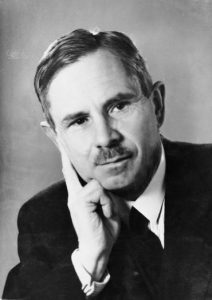
Gyula Moravcsik (1892–1972)
Moravcsik worked as a teacher in Eötvös Collegium from 1923 to 1936. He was responsible for teaching Greek and Latin to students of classical philology, in cooperation with his elder colleague and friend Miklós Szabó (1884–1960), a former member, then teacher in the Collegium since 1906, who had taught Moravcsik himself as well.
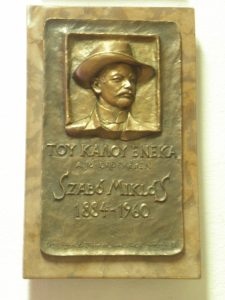
Miklós Szabó (1884–1960)
We do not know much about how Moravcsik taught Latin syntax and composition. The lessons were probably not held in Latin, as they had been when Gyula Gyomlay taught the young Moravcsik, but the textbook must have been the same: The Menge, i. e. the Repetitorium der lateinischen Syntax und Stilistik and Materialien zur Repetition der lateinischen Grammatik.
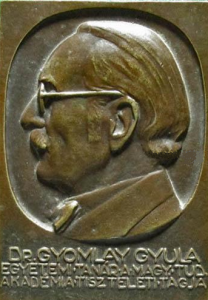
Gyula Gyomlay (1861–1942)
We know more about what he taught to the students of Greek, at least between 1927 and 1936, from his unpublished writings. His courses were the following: an introduction to Byzantine studies; the history of Byzantium, Selections – Ausgewählte Texte – from Byzantine authors, i.e. the reading of literary and historical works; Byzantine philology; the history of the Greek language, Greek and Byzantine epigraphy; papyrology, Menander’s comedies, and finally the fourth book of Herodotus, the so-called Scythian logos. The texts and materials he used in the lessons sooner or later appeared in his papers and books, but among his unpublished writings there are thoroughly prepared syllabuses, lesson plans, lectures and German textbooks complete with his own notes as well.
At the university, however, between 1936 and 1967 he very rarely had the opportunity to give lectures and seminars on the subject of Byzantine studies. The classical authors studied in the reading lessons were the following: Hippokrates, Alkaios, Sappho, Anakreon, Aristophanes (Nubes), Sophokles (Antigone, Oedipus Rex, Oedipus Coloneus), Euripides (Hippolytus), Thukydides, Demosthenes and Plato (Phaedo, Res Publica). His other main subject was Greek literature, on which, according to reminiscences, he gave thorough, detailed, although slightly boring lectures based on the well-known history of Greek literature by Christ, Schmid and Stählin. Besides his Introduction to Byzantine Studies there were further opportunities for the discussion of questions concerning the subject in the Greek linguistic history, paleography and philology lessons.
Before and after the time Moravcsik taught in the Collegium only the classics were read, similarly to the practice at the university, first and foremost Homer, and Sophocles, Plato and Demosthenes. Naturally, the teachers of Greek working in the Collegium, Móric Szilasi, Gyula Gyomlay and Miklós Szabó, teaching between 1906 and 1944, also had lessons on subjects they were personally interested in, as we know from teachers’ reports, textbooks written by Gyomlay, and from the translations of Greek literary works by Szilasi, Gyomlay and Szabó. In the year 1895 classical philology students only read the Iliad in the first year, as Móric Szilasi (1854–1905) writes in his report on 12th June 1896: In Greek we restricted ourselves to Homer, and we succeeded in reading the entire Iliad thoroughly, except for two books.
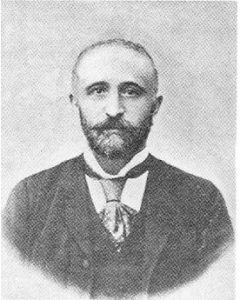
Móric Szilasi (1854–1905)
Teachers’ reports to the Curator of the Collegium are widely quoted sources of the history of the institution. They provide information about the academic work as well as about the progress and character of the students. The portraits tend to be apt, sometimes reminding us of the best passages in Theophrastos, and they also provide interesting additional material to the academic career of the students who later became scholars themselves. Jenő Darkó, a member of the Collegium from 1898 to 1902, is not mentioned in the teachers’ reports, as in the earliest times the students’ character was not discussed there.
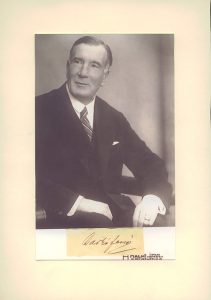
Jenő Darkó (1880–1940)
Gyula Czebe, on the other hand, who joined the Collegium in 1904, was praised by all his teachers as one of the best.
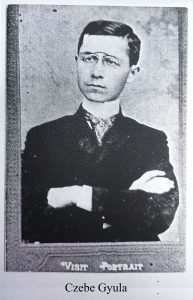
Gyula Czebe (1887–1930)
The young Moravcsik’s portrait is often quoted by his pupils as well as by his opponents. His teacher of Greek, Miklós Szabó described him after his first year in the Collegium, in 1911, as follows: He is sophisticated in his way of thinking and persistent in his work, but there are serious gaps in his knowlegde to fill […] He is well-prepared in the details […] but the language as a living organism is beyond his reach. In the course of time he will be one of the best.
In 1923, due to the Latinist József Huszti’s appointment at the University, the Collegium got the opportunity to employ a new teacher. The procedure of the appointment of teachers is known, and we also know that the candidates were as a rule nominated by the director of the Collegium. In 1923 Gyula Czebe might have called on the director of the Collegium in the matter of the vacancy. Czebe had been banned from teaching due to his role in the political events of the year 1919 for a fixed period of time, which was not yet over in 1923. After Czebe’s visit the legendary director of the Collegium, the physicist Géza Bartoniek probably consulted the former members of the Collegium, and decided to nominate Moravcsik instead, who had fallen into Russian captivity in 1915 and had only returned from a Siberian prison camp five years later, in 1920.
In the years when Szabó and Moravcsik were working in the Collegium the way Latin and Greek was taught was slightly different from the practice of the earlier and later years both in syllabus and in method. Although Szabó and Moravcsik may not have been brilliant teachers, they worked out a detailed plan for teaching Latin and Greek and laid the foundations of philological studies based on German Handbücher, and were very strict, even over-scrupulous and soldierlike according to some malicious accounts, in testing the students. Especially during the directorship of Szabó, between 1935 and 1944 many people were concerned for the French spirit of the Collegium, which they believed to be threatened by Prussianism. As a matter of fact, Szabó’s military bearing even earned him the nickname miles Collegii. Their method was simple: it was based on gradual progress, the best order and the right amount of the material – and mutual respect. The freshmen admitted to the Collegium at the time were no longer at the level they had been before. Their knowledge of Latin was insufficient, while the teaching of Greek had almost ceased to exist at secondary grammar school level. As a result not only the extent of their knowledge but the number of the students of Latin and Greek had also been decreasing steadily both at the university and in the Collegium. Many students chose history as a second subject to Latin instead of Greek, and it often became their main subject. The students who read Latin and history were nicknamed muli in the Collegium, and as early as during the years of Szabó’s directorship several such mules were enlisted to study Greek there.
Between 1895, the year the Collegium was established, and the drastic changes that took place in 1950 a large number of the students of Latin and Greek became secondary grammar school teachers, who also wrote useful textbooks, grammar books and dictionaries. Others took interest in the antiquity, studied classical Greek literature and translated classical authors. Only a few devoted themselves to Byzantine studies, or Mittelgriechische Philologie, as it was called at the time. The members of the first circle of students in the Collegium were the following, in chronological order: Jenő Darkó (1880–1940), Gyula Czebe (1887–1930), Endre Horváth (1891–1945) and Gyula Moravcsik (1892–1972). All were pupils of Vilmos Pecz (1854–1923), who taught at the university in Budapest from 1895 to 1923.
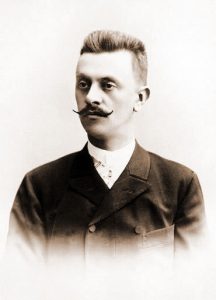
Vilmos Pecz (1854–1923)
Rezső Vári (1867–1935), a professor of Greek at the university succeeding Pecz, also belonged to this circle.
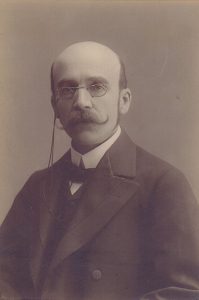
Rezső Vári (1867–1935)
They all shared the view that Greek studies should cover everything from Homer to present-day Greeks including every aspect of Greek culture. The discipline which dealt with the entire Greek civilization was called hellénologie, and Byzantinology was considered to be part of it, focusing on the Greek culture of the Middle Ages. Their research in the field of Byzantinology invariably dealt with the Byzantine-Hungarian, or in accordance with the above approach, the Greek-Hungarian relations. Endre Horváth, for example, studied the history of the Greeks living in Hungary in the past.
The beginnings of Hungarian Byzantinology can be traced back to the early 19th century. After the excesses of Romantic historiography it was the Millennium of the Hungarian Conquest (1896) that provided an opportunity for positivist historians to collect the sources on the early period of Hungarian history and to publish them with a Hungarian translation. The historians and philologists both aimed at finding and interpreting the Byzantine sources connected to the conquest. The most important texts were the Tactics of Leo the Wise and the De administrando imperio. The researchers focused on the so-called Hungarian chapters of the two works from the very beginning, from the brilliant historian and Greek scholar Károly Szabó (1824–1890) to Gyula Moravcsik, even up to the present day.
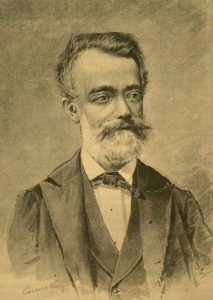
Károly Szabó (1824–1890)
The scope was widened gradually covering the period to the fall of Constantinople, with special emphasis on the earliest sources, on the relations between the Comneni and the Angeli and the Árpáds in the 12th century, and finally on the last Byzantine historiographers and on the historical role of János Hunyadi in the last days of Byzantium. As most of the sources are historical narratives (histories, chronicles or hagiographies) the study of the ethnonyms used in these genres had become an independent field of research. A great achievement was Moravcsik’s Byzantinoturcica, following in the footsteps of Darkó. The most significant editions were the Histories of Laonikos Chalkokondyles, edited by Darkó, the De administrando imperio, edited by Moravcsik, and finally Moravcsik’s posthumous work, The Byzantine Sources of Hungarian History in the Age of the Árpáds. Fontes Byzantini historiae Hungaricae aevo ducum et regum ex stirpe Árpád descendentium (edited by István Kapitánffy and Zsigmond Ritoók in 1984). Each of the 55 texts in this collection is the result of an independent manuscript research, and the critical edition of the excerpts was published complete with an introduction, a Hungarian translation, explanatory notes and a comprehensive bibliography (until 1972).
The self-imposed restriction, or to use a contemporary expression coined by Gyula Moravcsik, the Byzantinology of Hungarian interest or of Hungarian object, led to heated arguments and debates both between the generations and among the contemporaries due to the limited number and the closed corpus of the sources. The consequence was bitter silence or even the desertion of the discipline.
Let us see an example of the latter. In 1923, when Vilmos Pecz died, Moravcsik became a teacher in the Collegium. Vári and Gyomlay gave up their research after the sharp criticism and attacks they had received – justifiably, we must admit –, and became prominent public figures at provincial universities and in the field of cultural policy. Czebe got excluded from the scientific circles for political reasons. Two Byzantinologists remained, Darkó and Moravcsik, both former students in Eötvös Collegium. The older of the two, Jenő (Eugen) Darkó von Dálnok, was the descendant of a noble Transylvanian family.
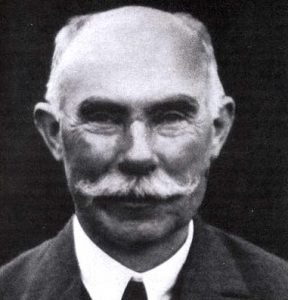
August Heisenberg
He was a pupil of Vilmos Pecz and August Heisenberg, a member of the Hungarian Academy since 1913, a scholar of great international renown, twice dean, then rector magnificus in Debrecen, the stronghold of Hungarian university education in the countryside.
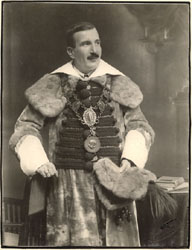
Jenő Darkó as rector magnificus
He was also a prominent and influential public figure of local politics, who, under the pseudonym Siculus, raised his voice for the Hungarians in Transylvania after the Treaty of Trianon (1920). Gyula Moravcsik, born to a family of intellectuals in Budapest, started his career after his return from Russian captivity in 1920, a little belated, but with all the more energy, and very soon gained an international professional reputation. Among other things it was his debates with Darkó that made him known all over the country. After his unusually sharp criticism of the Chalkokondyles-edition they argued about an inscription and a figure on the enamel plates of the Corona Graeca, the lower diadem of the Holy Crown of Hungary. During his debates – Moravcsik had another heated argument with Károly Kerényi – he kept on working steadily, and the fourteen years he spent in the Collegium and his first years at the university were the most creative periods of his life. The first versions of his most significant works had been completed by that time, and along with the doctoral theses of his students were published in the series titled Hungarian-Greek Studies (ΟΥΓΓΡΟΕΛΛΗΝΙΚΑΙ ΜΕΛΕΤΑΙ).
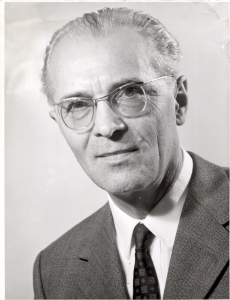
István Borzsák (1914–2007)
According to his former pupil, the classical scholar István Borzsák’s (1914–2007) reminiscencies Moravcsik looked after the future classical philologists in the Collegium conscientiously and systematically, while he never missed an opportunity to gain adepti to Byzantinology, which was so close to his heart. The Hungarian expression in the last clause is ambiguous, it can also mean „the kind of Byzantinology he liked”. There were some who resisted, for example Borzsák himself, but there were others, quite a few, who decided to join him. These students, Moravcsik’s disciples made up the second generation of Byzantinologists in the Collegium. His most promising student was the talented Mátyás Gyóni (1913–1955), whose untimely death was a great loss for all.
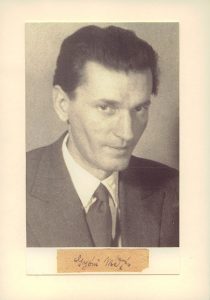
Mátyás Gyóni
An even greater loss was that the historical catastrophes Hungary had to face in the middle of the 20th century – the lost war, the Soviet occupation, the failed 1956 revolution, the retribution and the emigration that followed – swept the disciples away, claiming their life or ruining their scientific career. That is why after Moravcsik’s retirement in 1967 the university seized the chance to terminate the independence of the Greek Department owing to an alleged lack of succession. This meant that the opportunity to institutionalize Byzantine studies at the university was also lost. Moravcsik’s attempt to have a Byzantine department and a position established at the university for Gyóni failed tragically in 1955.
The topics Moravcsik recommended to his students for their doctoral theses were parts of the broad topics he had given lectures on several times, on various occasions. He set the aim very clearly in the last chapter of his book titled An Introduction to Byzantinology. This chapter was not included in the German version published posthumously under the title Einführung in die Byzantinologie.
According to Moravcsik Hungarian Byzantinologists should focus on the following three areas:
- The Byzantine sources on the peoples living in the Carpathian Basin before the Hungarian Conquest, with special emphasis on the Avars.
- The Byzantine sources on the peoples participating in the Hungarian ethnogenesis on the steppe.
- The Byzantine sources on the mediaeval history of Hungary and the Hungarian-Byzantine relations from 895 to 1453, the Fall of Constantinople.
The most important tasks are the research of the written sources connected to the archeological finds in Hungary and to Mediaeval Hungarian history and editing, translating and interpreting recently emerged and already known texts. As these require the mastery of Latin and Greek and a great expertise in textual criticism, paleography and codicology, Moravcsik’s idea of the Hungarian Byzantinologist is a researcher who has turned towards Byzantine studies having already acquired a thorough knowledge of classical philology.
The only question left to answer is how we can cope with the tasks we have been assigned and how we can make the best use of our legacy as students of classical philology motivated for Byzantine studies by János Harmatta (1917–2004), István Kapitánffy (1932–1997) and Tibor Szepessy (1929), the disciples of Gyula Moravcsik at the university and in the Collegium.
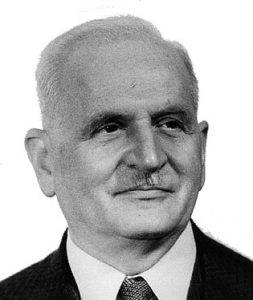
János Harmatta (1917–2004)
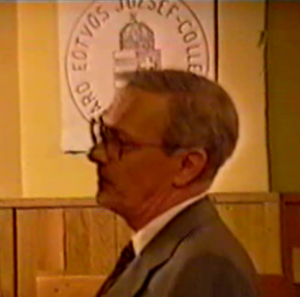
István Kapitánffy (1932–1997)
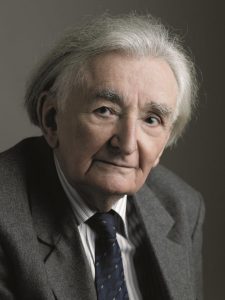
Tibor Szepessy (1929–)
We have inherited the German orientation of the discipline, as we, similarly to our predecessors, used German textbooks or ones adapted from German, and were educated in a similar system. The centuries of contact and geographical proximity also resulted in inspiring professional and personal connections with the Austrian and German Byzantinisten. (Let us recall the peregrinationes to Berlin, Munich and Vienna, and the friendships formed on such occasions.) We have also inherited, embraced and have been happy to pass on the spirit of the Collegium, the atmosphere of scientific research, the practice of sharing knowledge, and the traditional methodology of textual criticism.
But how can we meet Moravcsik’s expectations? Sadly, we are unable to continue his complete and organic work. What was left to do, has already been done, the work has been finished. The Avarica were collected, published, translated and interpreted by Samu Szádeczky-Kardoss (1918–2004) and his disciples in Szeged. Two new chrestomathies were published in 2014, after a lengthy period of gestation, adding new items to the Byzantine sources partly on the history of the Árpáds and partly from 14th to 16th century sources, thus continuing and extending in time Moravcsik’s and Gyóni’s collections. These volumes may add new details to our knowledge of Mediaeval Hungary, but they do not change it fundamentally. István Kapitánffy’s minor papers seem to be of greater significance. They discuss the old questions from a new, Byzantine angle, reconsidering and correcting even Moravcsik’s conclusions. At the same time they present a picture of Byzantium as drawn in the Latin works written in Hungary in the Middle Ages. Even the title of the posthumous volume is eloquent: it is called Hungarobyzantina (2003). In his oeuvre there are other works of fundamental importance as well, like the Hungarian translation of Prokopios’ Secret History (1984), his concise History of Byzantine Literature (1989) in Hungarian and papers that deal with topics not traditionally discussed in Hungarian Byzantinology, like the Byzantine epigram, Agapetos’ Fürstenspiegel, Chorikios’ speeches or 6th century historiography. Looking into the works of Hungarian Byzantinologists from the very beginning up to the recent years we find that they also published papers discussing Byzantine topics without Hungarian references.
As the former lines cannot be pursued any further, new topics must be found. Nevertheless, we must be careful to choose new texts which enable us to connect with the works of our predecessors through the author (e.g. Constantine Porphyrogenitus, Laonikos Khalkokondyles), the era (6th and 11-12th c.) or the genre (Greek and Byzantine Romance or historiography), we must study, edit and translate these texts adopting new achievements, and while doing so we must never forget to re-read the works that led us to them again and again.
Zoltán Farkas
(Lecture given at the Conference Byzance et l’Occident, November 26, 2015, Budapest.)
